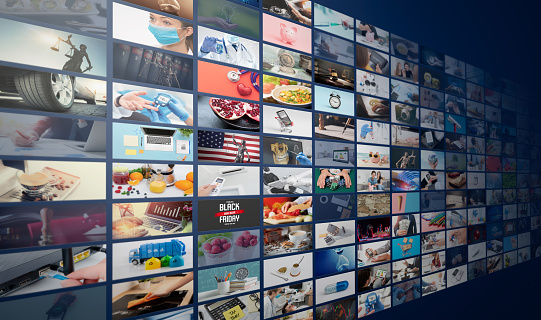The rise of digital entertainment and streaming services has transformed the way we consume media. Gone are the days when we had to wait for our favorite TV shows or movies to air on television or go to a physical store to rent DVDs. With the advent of digital streaming services, we now have access to a vast library of content that we can watch on demand, anytime and anywhere.
In this article, we will explore the factors that have led to the rise of digital entertainment and streaming services, and the impact they have had on the media industry and our society.
Technological Advances:
The development of high-speed internet and mobile devices has been a key driver of the rise of digital entertainment and streaming services. With the proliferation of smartphones and tablets, people now have access to the internet and media content wherever they are. The availability of high-speed internet has also made it possible to stream high-quality video content without buffering or interruption.
In addition, the development of streaming technologies such as adaptive bit-rate streaming has made it possible to deliver video content in a seamless and efficient manner. This technology adjusts the quality of the video stream based on the user's internet connection, ensuring a smooth viewing experience regardless of the user's location or device.
Convenience and Flexibility:
One of the main advantages of digital entertainment and streaming services is their convenience and flexibility. Users can watch their favorite shows or movies on demand, at a time and place of their choosing. This eliminates the need to schedule viewing times or plan around broadcast schedules, making it easier for people to fit media consumption into their busy lives.
Furthermore, many streaming services offer personalized recommendations and content curation based on user preferences and viewing history. This makes it easier for users to discover new content that they are likely to enjoy, further enhancing the convenience and flexibility of these services.
Variety of Content:
Digital entertainment and streaming services offer a wide variety of content, from TV shows and movies to documentaries and original programming. These services cater to a diverse range of interests and preferences, providing something for everyone. The availability of niche content and international programming has also contributed to the popularity of these services, as they allow users to explore new cultures and perspectives.
In addition, many streaming services have invested heavily in producing original content, which has helped to differentiate their offerings from traditional broadcast and cable TV. This has led to a rise in high-quality and critically acclaimed programming, further driving the popularity of these services.
Disruption of Traditional Media:
The rise of digital entertainment and streaming services has disrupted traditional media industries, such as cable TV and movie theaters. These services have challenged the traditional business models of these industries and forced them to adapt to changing consumer preferences.
For example, many cable TV providers now offer their own streaming services or have partnered with existing services to provide bundled packages. Movie theaters have also had to adapt by offering premium experiences such as luxury seating and food and beverage options to attract customers who are seeking a more immersive viewing experience.
Societal Impact:
The rise of digital entertainment and streaming services has had a significant impact on our society. These services have changed the way we consume media and have led to a shift in our viewing habits. Binge-watching, for example, has become a popular trend, as users can now watch entire seasons of TV shows in one sitting.
Furthermore, the availability of on-demand content has led to a rise in cord-cutting, as people are increasingly choosing to forego traditional cable TV in favor of digital streaming services. This has led to a fragmentation of audiences and a shift in advertising revenue from traditional media to digital platforms.
END
The rise of digital entertainment and streaming services has transformed the media landscape and disrupted traditional industries. These services offer convenience, flexibility, and a wide variety of content that cater to diverse interests and preferences.




0 Comments